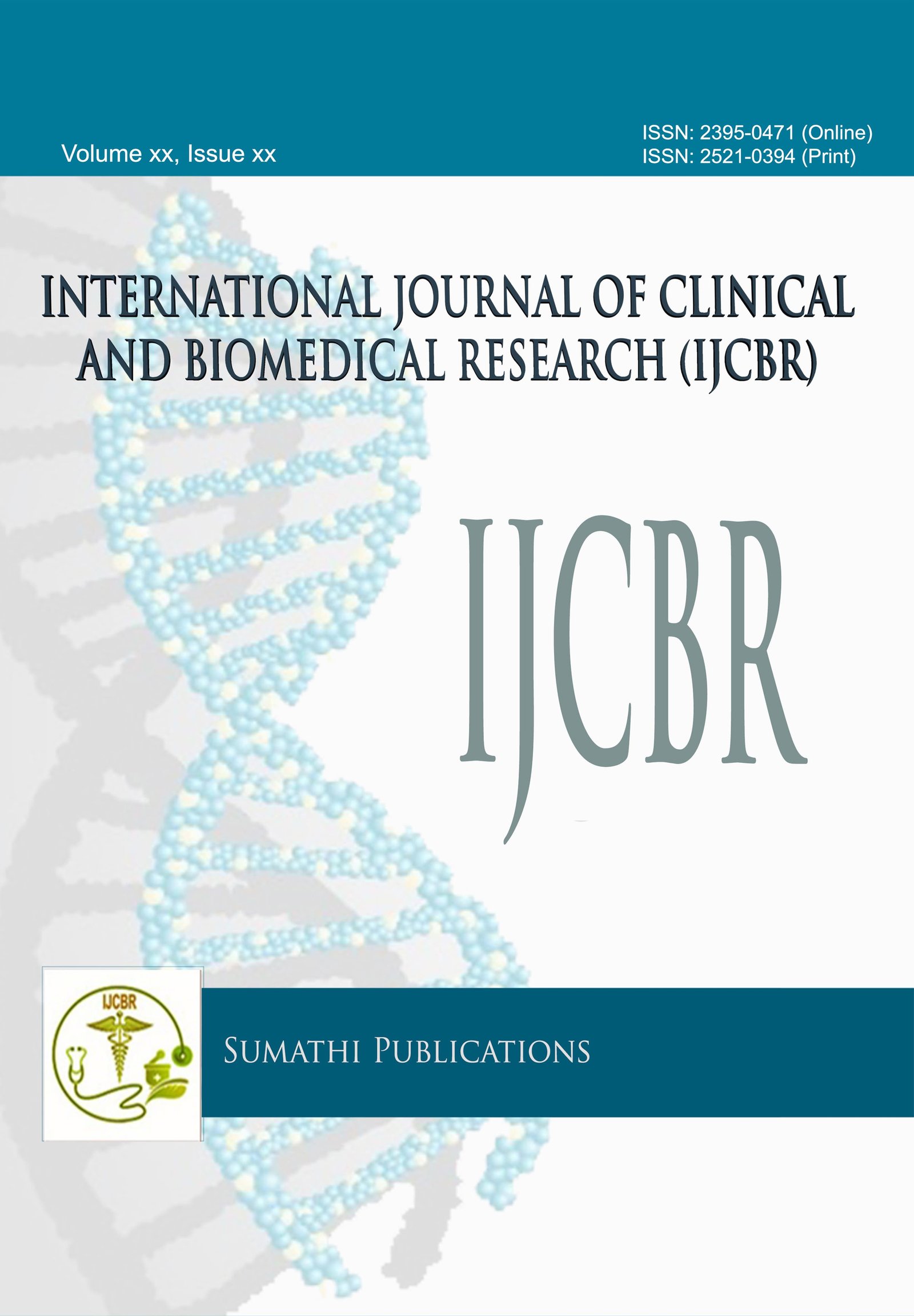Utility Of Salivary CA-125 And LDH As Tumor Markers In Oral Malignancy
DOI:
https://doi.org/10.31878/ijcbr.2018.43.14Abstract
Background: The mortality and morbidity associated with oral squamous cell carcinoma(OSCC) can be greatly reduced if tumor markers which can detect OSCC at an early stage are available. This study attempts to use saliva as the diagnostic medium to determine the correlation of salivary CA 125 and LDH in tobacco users with and without potentially malignant disorders. Changes in CA 125 and LDH level can be used as a marker in patients with and without premalignant disease and can be used as a deterrent in continuation of the habit. Aims: To assess the role of CA 125 & LDH as a tumour marker in Oral cancer patients. Materials and methods: Cross sectional observational study .Time period: December 2015 to August 2017. Study area: OPD of tertiary care hospital in pune. Total participants: 150 persons. Under non-stimulatory conditions whole saliva sample was collected from each individual and was centrifuged. The resulting supernatant was used for estimation of CA 125 and LDH levels. Results: In present study, mean Salivary LDH level was found to be lowest among cases of healthy individuals while it was highest among individuals who were diagnosed and underwent treatment for malignancy. However there was insignificant difference seen between levels of diagnosed case of oral malignancy and the ones who underwent treatment for oral malignancy. Also mean Salivary CA-125 was lowest in healthy individuals and highest in individuals diagnosed with oral malignancy and the levels were seen to be reduced significantly in the one who underwent treatment for oral malignancies than those who didn't. Conclusion: Salivary CA 125 and LDH has a role in early detection of oral malignancies and can be used as a diagnostic marker. However LDH levels are persistently raised even after treatment for oral malignancy.
Downloads
Downloads
Published
Issue
Section
License
The journal allows the author(s) to hold the copyright without restrictions and will retain publishing rights without restrictions.
The submitted papers are assumed to contain no proprietary material unprotected by patent or patent application; responsibility for technical content and for protection of proprietary material rests solely with the author(s) and their organizations and is not the responsibility of the journal. The main (first/corresponding) author is responsible for ensuring that the article has been seen and approved by all the other authors. It is the responsibility of the author to obtain all necessary copyright release permissions for the use of any copyrighted materials in the manuscript prior to the submission.
What are my rights as an author?
It is important to check the policy for the journal to which you are submitting or publishing to establish your rights as
Author. Journal's standard policies allow the following re-use rights:
- The journal allows the author(s) to hold the copyright without restrictions.
- The journal allows the author(s) to obtain publishing rights without restrictions.
- You may do whatever you wish with the version of the article you submitted to the journal.
- Once the article has been accepted for publication, you may post the accepted version of the article on your own personal website, your department's website or the repository of your institution without any restrictions.
- You may not post the accepted version of the article in any repository other than those listed above (i.e. you may not deposit in the repository of another institution or a subject-matter repository) until 12 months after publication of the article in the journal.
- You may use the published article for your own teaching needs or to supply on an individual basis to research colleagues, provided that such supply is not for commercial purposes.









